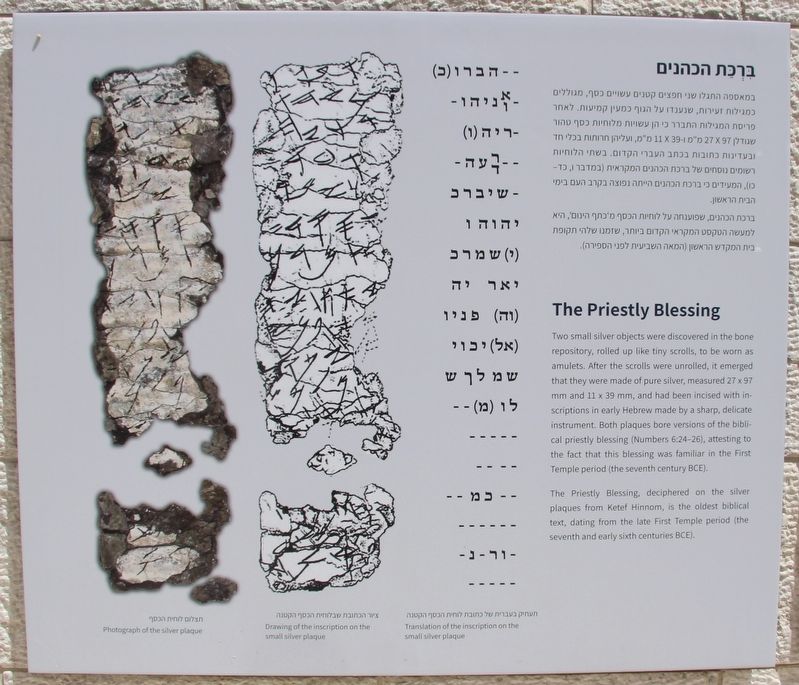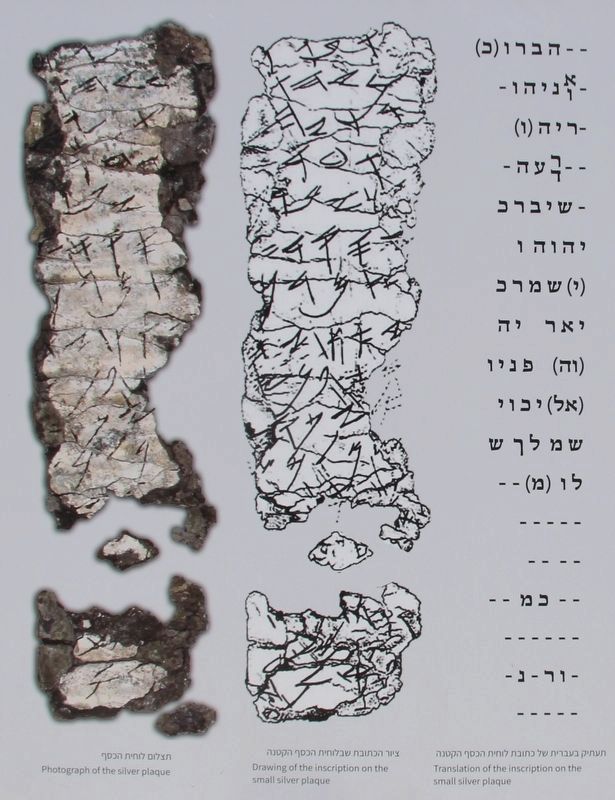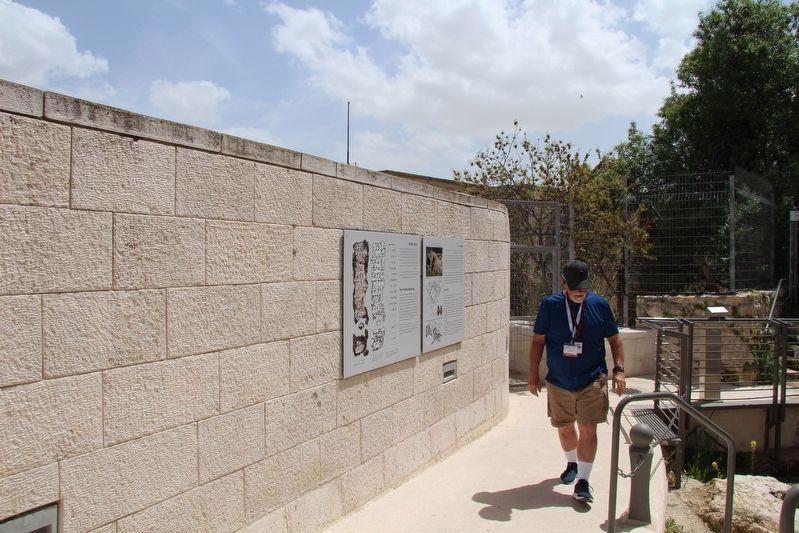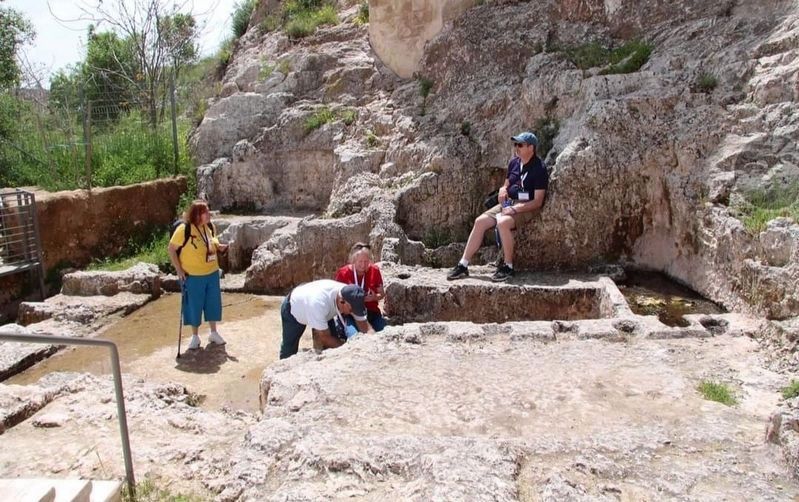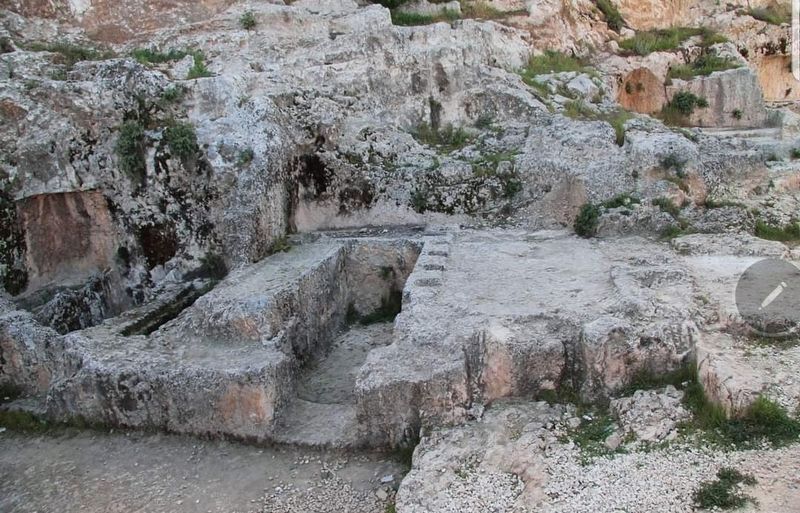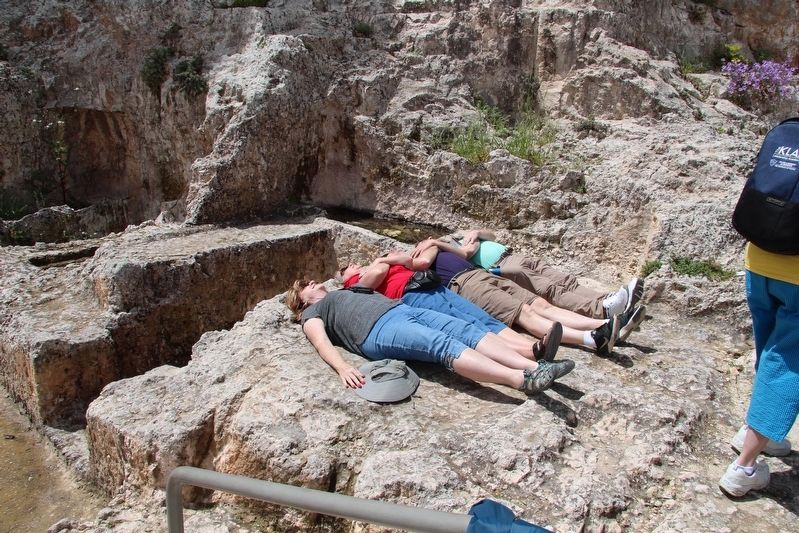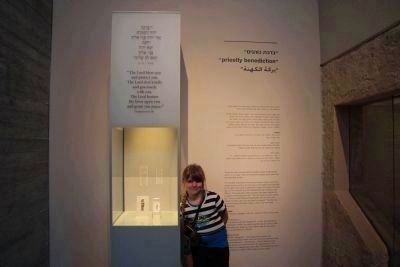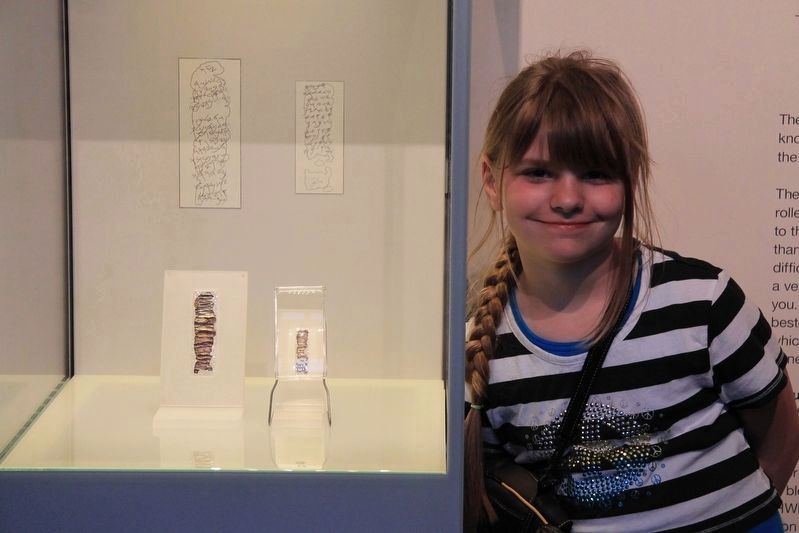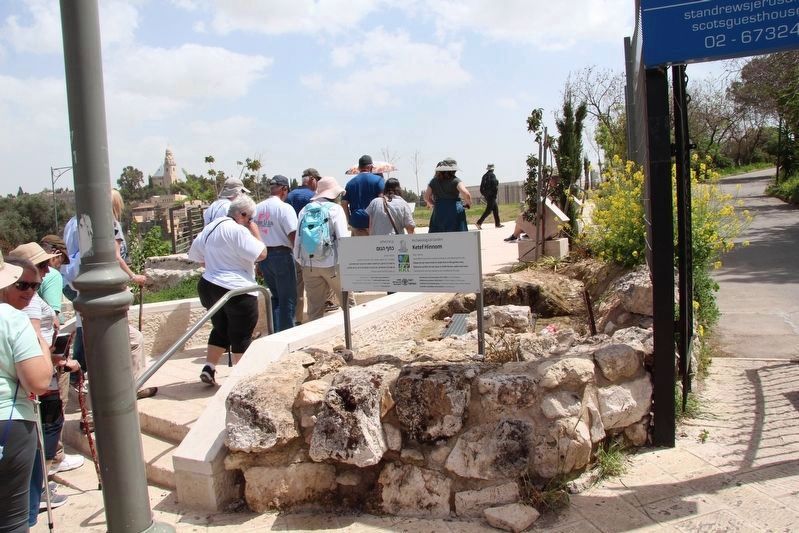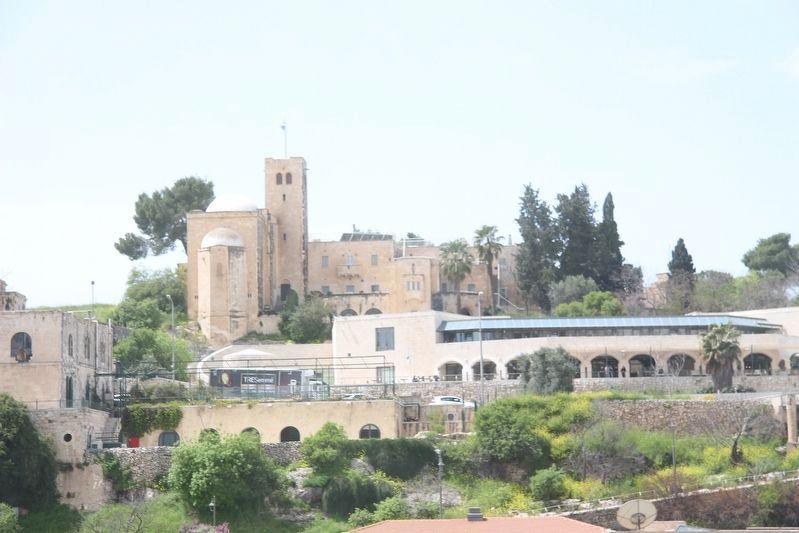Jerusalem, Jerusalem District, Israel — The Middle East (West Asia)
The Priestly Blessing
Ketef Hinnom
— Archaeological Garden —
Two smaller silver objets were discovered in the bone repository, rolled up like tiny scrolls, to be worn as amulets. After the scrolls were unrolled, it emerged that they were made of pure silver, measured 27 x 97 millimeters and 11 x 39 millimeters, and had been incised with inscriptions in early Hebrew made by a sharp, delicate instrument. Both plaques bore version of the biblical priestly blessing (Numbers 6:24-26), attesting to the fact that this blessing was familiar in the First Temple period (the seventh century BCE).
The Priestly Blessing, deciphered on the silver plaques from Ketef Hinnom, is the oldest biblical text, dating from the late First Temple period (the seventh and early sixth centuries BCE).
Topics. This historical marker is listed in these topic lists: Anthropology & Archaeology • Cemeteries & Burial Sites • Churches & Religion.
Location. 31° 46.146′ N, 35° 13.53′ E. Marker is in Jerusalem, Jerusalem District. Marker is on Sh.A. Nakhon Street just east of David Remez Street, on the right when traveling east. This marker is located in a small archaeological park, that is wedged in-between the backside of the Menachem Begin Heritage Center and the backside of the St Andrew's Scots Memorial Church, with a walkway entrance to the park off of the south side of Sh.A. Nakhon Street. Touch for map. Marker is in this post office area: Jerusalem, Jerusalem District 94110-14, Israel. Touch for directions.
Other nearby markers. At least 8 other markers are within walking distance of this marker. Ketef Hinnom (a few steps from this marker); Cave 24 (a few steps from this marker); Tombs from the First Temple Period (within shouting distance of this marker); The Temple Society People's House (approx. 0.3 kilometers away); The Mount Zion Trench (approx. 0.3 kilometers away); Mishkenot Sheananim (approx. 0.3 kilometers away); Jerusalem Walls National Park (approx. 0.4 kilometers away in Israel); King David's Tomb (approx. half a kilometer away in Israel). Touch for a list and map of all markers in Jerusalem.
Regarding The Priestly Blessing. It should be noted that the artifacts recovered at this site, in particular the silver scroll amulets with the priestly blessing, were considered as being so significant that they were put on display at the Israel Museum in Jerusalem. These scrolls are so significant because they are, in essence, "...the sole scientific proof of the use of verses from the first five books of the Torah during the First Temple Period." (Menachem Begin Heritage Center website).
So because of this, when I visited the Israel Museum, I made a point of finding the display that showcased the silver scroll amulets, and
put my youngest daughter beside the display, and took a picture.
In addition to having a display for the silver scroll amulets, right beside this display, the Israel Museum has a second display that is a reproduction of the First Temple Period, rock cut tomb, where the silver scroll amulets were found.
Also see . . .
1. 'Silver scrolls' are oldest O.T. scripture. This is a link to information provided by the Baptist Press. (Submitted on October 25, 2019, by Dale K. Benington of Toledo, Ohio.)
2. Silver Scrolls. This is a link to information provided by the Crystalinks. (Submitted on October 31, 2019, by Dale K. Benington of Toledo, Ohio.)
3. Miniature Writing on Ancient Amulets. This is a link to information provided by the Biblical Archaeology Society. (Submitted on October 31, 2019, by Dale K. Benington of Toledo, Ohio.)
4. Ketef Hinnom. This is a link to information provided by Wikipedia. (Submitted on October 31, 2019, by Dale K. Benington of Toledo, Ohio.)
5. The Ketef Hinnom Archaeological Site in Jerusalem. This is a link to a link to a You Tube posting provided by AllAboutJerusalem. (Submitted on October 31, 2019, by Dale K. Benington of Toledo, Ohio.)
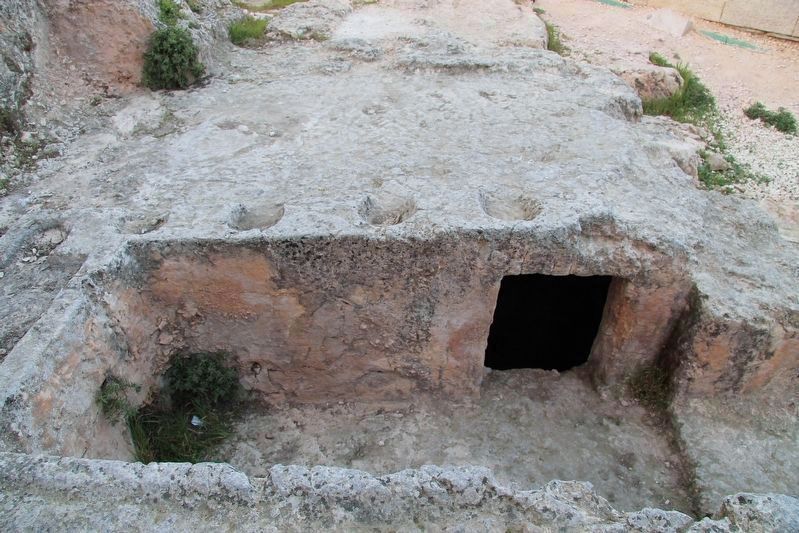
Photographed By Dale K. Benington, March 13, 2013
7. Ruins of Cave 24
Another view of the featured, First Temple Period, rock cut tomb, showing that underneath the bench with all the headrests is a chamber, or repository, hollowed out of the rock. It was in this chamber, or repository, that over 1,000 artifacts were found, along with the two silver scrolls.
Credits. This page was last revised on October 31, 2019. It was originally submitted on October 25, 2019, by Dale K. Benington of Toledo, Ohio. This page has been viewed 628 times since then and 27 times this year. Photos: 1, 2, 3, 4, 5, 6, 7, 8, 9, 10, 11. submitted on October 25, 2019, by Dale K. Benington of Toledo, Ohio.
